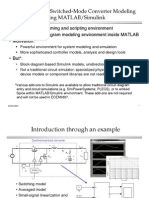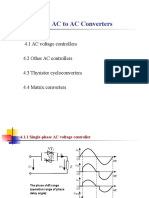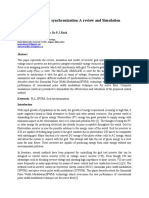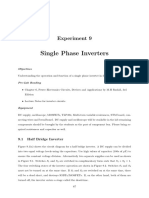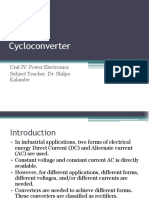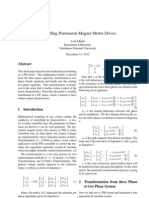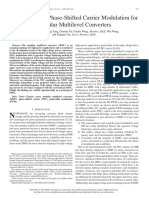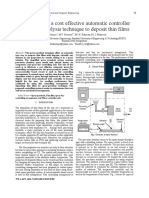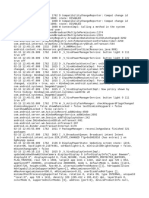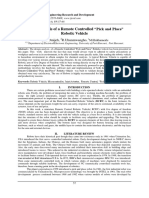0% found this document useful (0 votes)
160 views7 pagesCapacitor Voltage Balancing
The document discusses a modified triangular injection approach for capacitor voltage balancing and reducing arm current and total harmonic distortion (THD) in modular multilevel converters (MMCs). The proposed method aims to achieve lower arm current, balanced submodule capacitor voltages, and minimum THD within a single algorithm. It compares the performance of the proposed method to other well-known modulation techniques in terms of THD and arm current. The key contributions are a new algorithm for MMCs based on triangular injection that confirms minimum harmonic profile as well as lower arm current and balanced submodule capacitor voltages.
Uploaded by
bipul ahmedCopyright
© © All Rights Reserved
We take content rights seriously. If you suspect this is your content, claim it here.
Available Formats
Download as PDF, TXT or read online on Scribd
0% found this document useful (0 votes)
160 views7 pagesCapacitor Voltage Balancing
The document discusses a modified triangular injection approach for capacitor voltage balancing and reducing arm current and total harmonic distortion (THD) in modular multilevel converters (MMCs). The proposed method aims to achieve lower arm current, balanced submodule capacitor voltages, and minimum THD within a single algorithm. It compares the performance of the proposed method to other well-known modulation techniques in terms of THD and arm current. The key contributions are a new algorithm for MMCs based on triangular injection that confirms minimum harmonic profile as well as lower arm current and balanced submodule capacitor voltages.
Uploaded by
bipul ahmedCopyright
© © All Rights Reserved
We take content rights seriously. If you suspect this is your content, claim it here.
Available Formats
Download as PDF, TXT or read online on Scribd
/ 7









